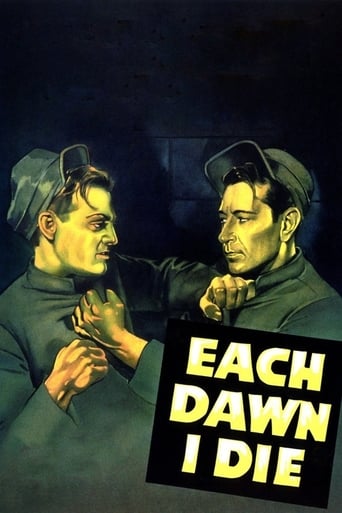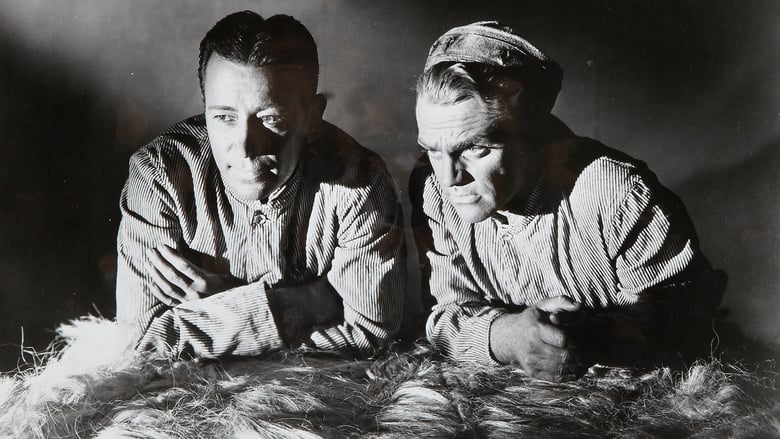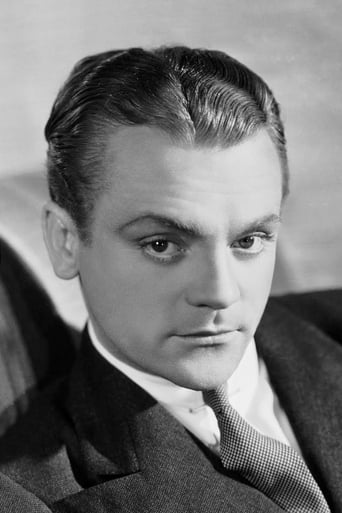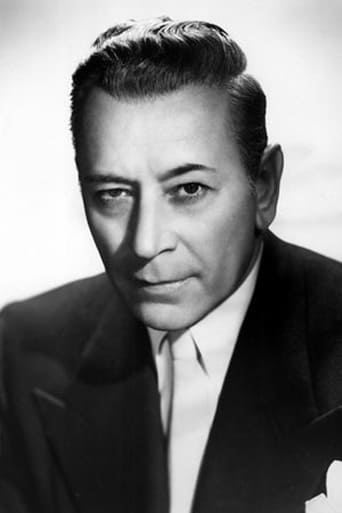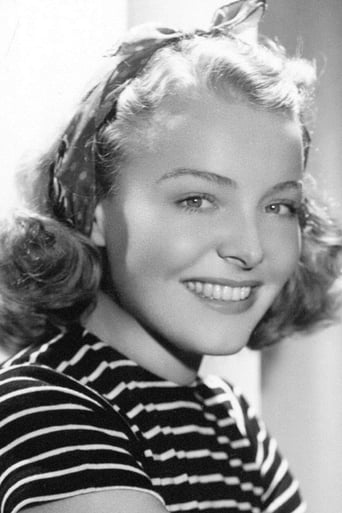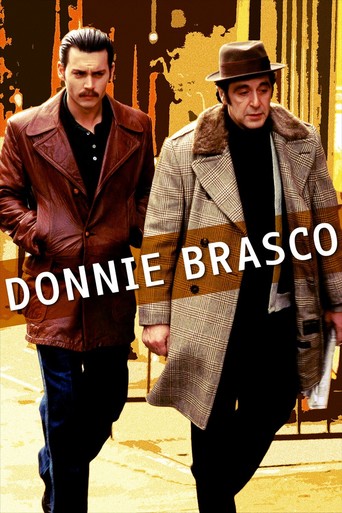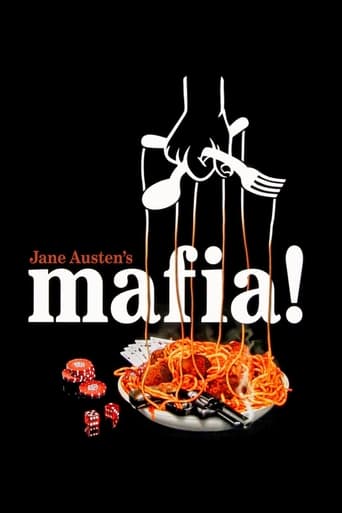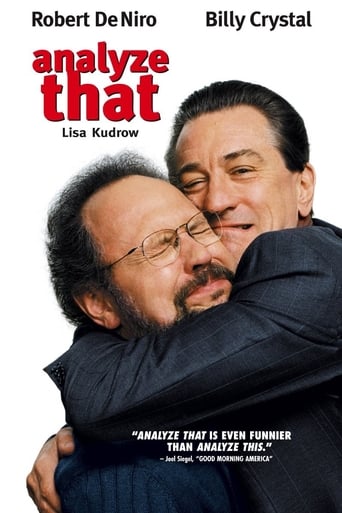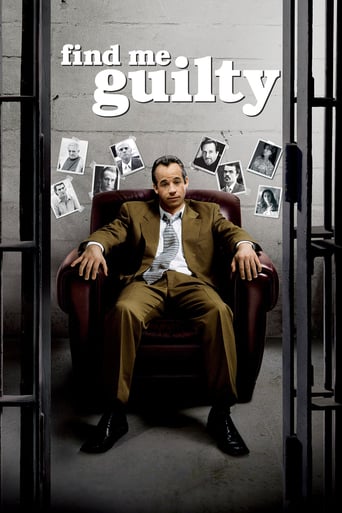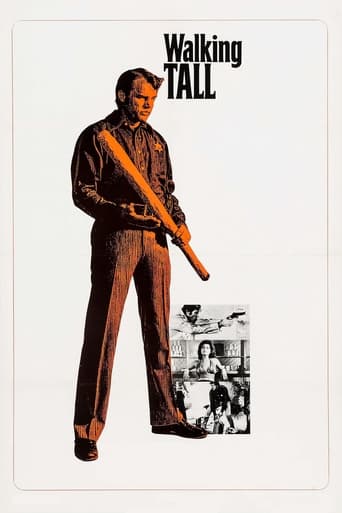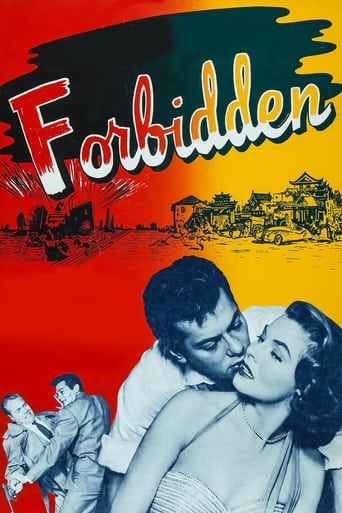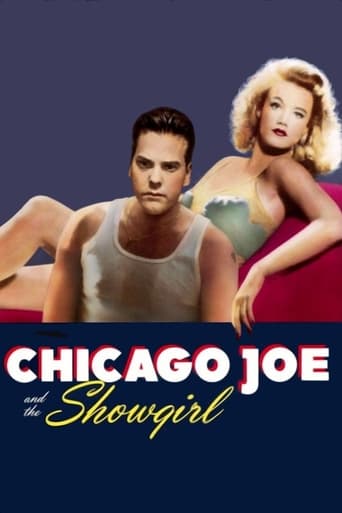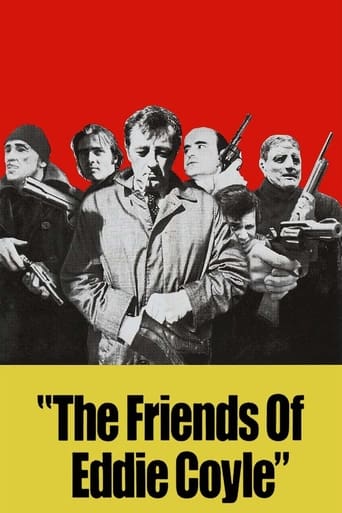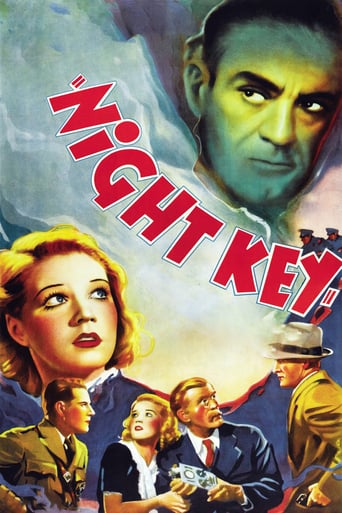Each Dawn I Die (1939)
A corrupt D.A. with governatorial ambitions is annoyed by an investigative reporter's criticism of his criminal activities and decides to frame the reporter for manslaughter in order to silence him.
Watch Trailer
Cast


Similar titles
Reviews
Very very predictable, including the post credit scene !!!
Sorry, this movie sucks
The movie's neither hopeful in contrived ways, nor hopeless in different contrived ways. Somehow it manages to be wonderful
Through painfully honest and emotional moments, the movie becomes irresistibly relatable
This time, James Cagney's up on a trumped up drunk driving charge and George Raft is the racketeer. Cagney was a reporter out to blow the lid off a crooked politician and an outburst in court added to his sentence. Through saving Raft's life from a prison rat, Cagney becomes his pal. Being the good guy he is (for a gangster anyway), Raft uses a convenient escape to help his new buddy out. After all, what are pals for, yaah? Yaah.Since he's already co-starred in gangster pictures with both EGR and Bogie, it was time for Raft to co- star. He gives a well rounded performance as a crook who knows he's in for the duration (199 years!) with nothing to lose but a wasted life if he doesn't attempt an escape. That sequence alone is quite thrilling, coming fast and out of nowhere. A clever script gives this fast pacing with an A budget and direction that would soon begin to wane in their early 40's B pictures. A bit of Warner Brothers publicity has the prisoners watching "Wings of the Navy", the perfect time for revenge on Joe Dowling, the rat. George Bancroft and Maxie Rosenbloom add color as some of Raft's cohorts, Jane Bryan as Cagney's devoted girl (there always has to be one of those, you see...) and Thurston Hall as the blowhard politician, more corrupt because of his own stupid arrogance and those around him than his own intelligence. Willard Robertson is a pretty brutal prison guard, one of the more hissable villains of prison films. Add in Emma Dunn for sentiment as Cagney's ma, and you've got the formula for a great melodrama that proves that crime does not pay, either for gangsters like Raft and dumb politicians like Hall.
The investigative reporter Frank Ross (James Cagney) finds evidence of corruption against a powerful politician Jesse Hanley (Thurston Hall) that is candidate to Governor in the elections. Hanley sends his gangsters to catch Frank to frame him. They knock his head and soak him with whiskey and then they put him fainted in car that hits another and kills the driver and two passengers. Frank can not prove that he is innocent and is sentenced to twenty years of hard labor in Rocky Point Prison. The newspaper direction tries to find evidence of Frank's innocence while he befriends the gangster Stacey (George Raft) that was sentenced to 199 years. Stacey asks Frank to help him to be accused for a crime that he had not committed since he has planned to escape from the courthouse. In return, he would help to find who has framed him up using his contacts in the underworld. Will Stacey really find the responsible for the frame-up? "Each Dawn I Die" is and engaging prison movie, despite the unrealistic plot. Stacey spontaneously returning to Rock Point is absolutely unbelievable and destroys the story. My vote is seven.Title (Brazil): "A Morte me Persegue" ("The Death Chases me")
EACH DAWN I DIE (Warner Brothers, 1939), directed by William Keighley, is a powerful story revolving around two men of different backgrounds who meet while serving time behind prison walls. Taken from the novel by Jerome Odlum, this adds to the many prison related themes commonly produced by the studio at that time. Aside from its fine direction and assortment of familiar stock players, the major draw happens to be on two most notable tough guys of the silver screen: James Cagney and George Raft. Although they initially appeared together, ever so briefly, in a dance marathon sequence from Cagney's starring film, TAXI (1932), EACH DAWN I DIE, their only real collaboration together, is certainly a worthy offering for them both. As their individual styles and distinctive mannerisms combined make up one solitary movie, it's Raft who gets both the best notices and a much-needed career boost after previous mediocre assignments from his former home base studio of Paramount. The plot opens on a stormy night as Frank W. Ross (James Cagney), reporter for The Banton Record, arrives at a construction company where he witnesses through the window Jesse Hanley (Thurston Hall), district attorney running for governor, and assistant, W.J. Grayce (Victor Jory), burning up their books and documents. After the news reached the front page, and before gathering enough evidence that could send the corrupt politician to prison, Hanley beats Ross to the punch by hiring thugs to abduct and have him placed drunk inside a moving car that crashes and kills three innocent people. Found guilty on charges of manslaughter, Ross is sentenced from one to twenty years in Rocky Point Prison. The news leaves his fellow reporter associates, Joyce Conover (Jane Bryan), Bill Mason (William B. Davidson) along with his poor mother (Emma Dunn), in total disbelief as they watch the handcuffed Frank being taken away. While in prison, Ross (Convict # 14517) finds himself under strict rule by Warden Armstrong (George Bancroft), while he and the other prisoners under the mercy of Pete Kassock (John Wray), a sadistic guard. Because Ross has saved the life of fellow inmate, "Hood" Stacy (George Raft), an underworld thug (Convict # 14520) sentenced to 199 years, the two eventually become good friends. Knowing the men who framed Ross, Stacy promises to help him regain his freedom. The only way to accomplish this is to be on the outside. With Ross's help, a well-staged escape is planned. Although Stacy's escape proves successful, a slight mishap on Ross's part has Stacy going back on his promise. Convinced of playing part of the Stacy's breakaway, Ross goes through the motions of brutal punishment and endless time in solitary confinement. As each dawn he dies, Ross continues to wait and wait and wait for a promise from Stacy that may never be fulfilled.George Raft, an truly underrated actor, shows how good he can be when offered a role to perfection. Though Raft did win critical praise and attention as Stacy, Cagney, too, is equally convincing as Ross. His distinctive Cagney trademark shines through with crucial scenes as his confrontation with the warden as he shows how hard-hitting and rebellious he's become while in solitary, along with his element of surprise and emotion when face to face with the new head of the parole board. Powerful stuff.Regardless of frequent television revivals over the years, EACH DAWN I DIE doesn't seem to be as well known as it should be, or maybe that's how it currently appears. The film itself is well-constructed as it is suspenseful. Though essentially original in premise, the routinely used elements of prisoners working in juke mills, taking recreation time in the courtyard, well-staged fist fights, prison break attempts and unpleasant punishment methods are commonly found here. There's even time out at the movies where inmates come together in the prison theater with the orchestra of cons playing the hit tune originated from SHIPMATES FOREVER (1935), "Don't Give Up the Ship," prior to the presentation of an actual 1939 Warner Brothers release, WINGS IN THE NAVY. While Jane Bryan is the only major female member in the cast, the film does refrain from any cliché romantic angles. Also among the list of tough-guy types in active support include Stanley Ridges, Maxie Rosenbloom, Alan Baxter and Paul Hurst. Though EACH DAWN I DIE may have flaws, the story and fine acting by all makes up for it in the long run. Distributed to home video and available on DVD, look for it next time it's broadcast on Turner Classic Movies and see the film responsible for earning George Raft a newfound studio contract for Warner Brothers. (***1/2)
Released in the summer of 1939, near the tail end of a decade's worth of hugely popular and influential gangster films from Warner Brothers, the studio's "Each Dawn I Die" is perhaps best remembered today for one reason: It is the only film to feature James Cagney and George Raft as costars. Raft HAD appeared in cameo parts in the 1932 Cagney films "Taxi!" and "Winner Take All," but those roles were nothing compared to the part he enjoyed in "Each Dawn I Die," in which he gets to completely dominate the usually irrepressible Cagney, and even emerge as the hero of the film. Rapidly paced and ultimately fairly moving, the film packs quite a bit of action and story into its 92 minutes, did justifiably great business at the box office, and remains yet another gem from "Hollywood's greatest year."In the film, Cagney plays an investigative newspaper reporter named Frank Ross. After writing a story about the town's crooked D.A., Ross is knocked out by thugs, splashed with booze, and set behind the wheel of a moving car. Three people are killed in the resultant smash-up, and Ross, effectively framed, is sent to the Rocky Point Penitentiary, doing "one to 20 years" for vehicular manslaughter. In the prison, he is assigned to hard labor in the twine-making factory, where he encounters "Hood" Stacey (Raft), a lifer with whom he bonds. To make a long story short (and "EDID" DOES feature a rather complex plot; this is a prison film with more on its mind than the usual big-house set pieces), Ross actively abets in Stacey's escape from the "Graybar Hotel," so that Stacey might use his underworld connections to prove Ross' innocence. But is there really honor among thieves, and will Ross be released before his imprisonment transforms him for the worse? In an increasingly suspenseful story line (based on the novel by Jerome Odlum), these are the main questions that come to the fore....Fans of Cagney's cocky, pugnacious tough-guy roles of the 1930s may be a bit surprised at how "EDID" spools out. His Frank Ross character may start out that way, but life at Rocky Point has a way of finding the cracking point of even the sturdiest nuts. Indeed, Cagney's sobbing breakdown before the parole board is simply stunning, and audiences would have to wait a full decade to see Cagney do a similar prison freakout scene of such affecting power (I am referring, of course, to Cody Jarrett going bonkers in the mess hall, in 1949's immortal "White Heat"). Cagney is aces in the film, despite playing the more passive role; his Frank Ross suffers terribly while doing time, and the viewer wonders if he will ever emerge the same man that he was at the film's opening, or become toughened and animalized, as was the case with Paul Muni's James Allen character in the superb Warners film "I Am a Fugitive From a Chain Gang" (1932). Raft, surprisingly, matches Cagney scene for scene, and I only say "surprisingly" because Raft is apparently held in low esteem, in many quarters, for his thespian chops. But he is just terrific here, and his real-life association with gangsters gives him an air of verisimilitude that easily brings him up to Cagney's level. Cucumber cool, he easily emerges as the film's most admirable and resourceful character (viewers would have to wait a full 20 years to see Raft essay an equally likable gangster role, as Spats Columbo, in "Some Like it Hot"), while the growing admiration and friendship between the two men is very much the heart and soul of this picture. Cagney, a product of NYC's Lower East Side, and Raft, who was raised in NYC's Hell's Kitchen, make a marvelous team in this, their only real pairing. They are hugely abetted by a roster of great supporting actors, including pretty Jane Bryan as Cagney's sweetie; George Bancroft as the ineffectual warden; Maxie Rosenbloom as a fellow convict, who gives the film what little humor it possesses; and the dependably hissable Victor Jory as the crooked assistant D.A. and later, stunningly, the head man at Ross' parole hearing. Director William Keighley, who had worked with Cagney before, on 1935's "'G' Men," and who would go on to work with him three more times (on 1940's "The Fighting 69th" and "Torrid Zone" and 1941's "The Bride Came C.O.D."), fills his frame with constant movement, utilizes effective close-ups, and keeps the action moving at a rapid clip. The dialogue in the film is as rat-a-tat-tat as the rapid-fire machine guns that the National Guard utilizes in the film's (seemingly obligatory) riot sequence, and a repeat viewing may be necessary to fully capture it all (it was for me, anyway). Culminating with an explosive finale in which every character gets pretty much what he deserves (at least, in accordance with the Production Code of the time!), "Each Dawn I Die" is a hugely satisfying affair, and a great success for everyone involved in it.

